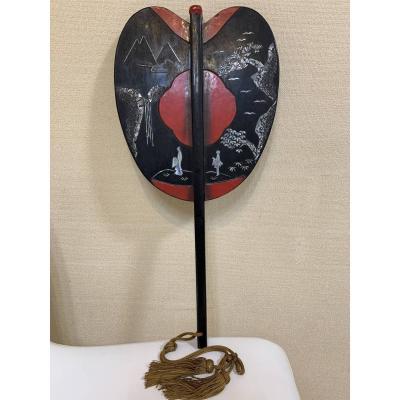The Gunbai, also known as Gunbai-uchiwa, was a kind of war fan, used by the Daimyo, Taisho ( generals) and Gashira (officers), worn to show rank and used to command their Samurai and Ashigaru troops on and off the battlefield. From the commanders of the Japanese warrior troops in medieval times to lead the troops during combat maneuvers, it was also a symbol of power. Gunbai came in various sizes and shapes and made from raw or lacquered wood, with or without decorative metal fittings, or solid metal. Often they were decorated with symbols, such as family crests, maxims, or invocations to different gods.
The Gunbai used by tactician Kuroda Kanbei even featured a compass inside the wooden handle. Another type of whip-shaped signaling device was known as Saihai. The Gunbai were typically family heirlooms, passed down successively from father to son. These Gunbai were unique. The Iron Gunbai in particular could also be used as a defensive weapon, to protect against surprise attacks, swords and arrows. Uesugi Kenshin was the first to use a Gunbai in 1563, during the Battle of Kawanakahima. The warriors also lent the Gunbai supernatural powers, offering protection and the right to rule as a tribal chieftain to anyone who used him
Type: Gunbai
Description: Authentic original ancient Gunbai is made of wood. the central part of the fan is heart-shaped, with a rectangular wooden handle, crossing at both ends. 3 parts, on both sides of the fan, are red lacquered and everything else is covered with lacquer black. Numerous small fragments of mother-of-pearl are embedded in the surface and form a natural scene, with mountains, a waterfall and 2 figures.
The traditional patterns are in Raden (mother-of-pearl inlay).
Period: Late Edo period - Early 19th century
Characteristics:
Dimensions: Approximately - Total length 52.5 cm, width 25.5 cm, thickness of the surface of the fan 1 cm, thickness of the handle 2 cm x 1.5 cm Material: Black lacquered wooden handle in Aogai Raden (mother-of-pearl inlay), red lacquer, etc.
Weight: 408 grs
Kamon (Family emblem): "Naka kage korin kiri mon" (Paulownia Korin leaf). This Kamon symbolizes abundance and prosperity in a nutshell, "Luck". The Paulownia was deified because it would be the tree on which the Houo (sacred mythological bird: the phoenix), had perched. The cord: It is made of silk and passes through a hole in the handle. This allows the Saihai to be suspended from the Samurai armor when not in use.
Quality:
Very Good
Condition: Very Good Defects: As this is an old and antique item, it may show some dirt, discoloration and fine scratches over time, but there is no noticeable damage.













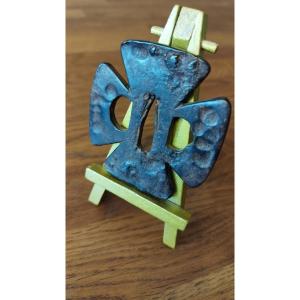
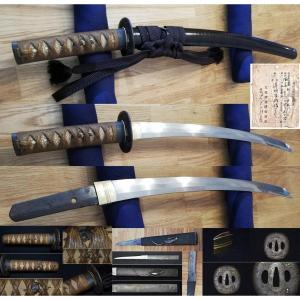
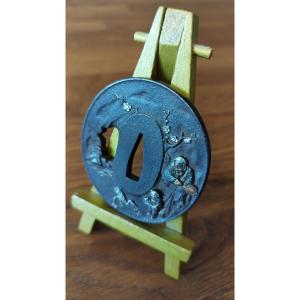
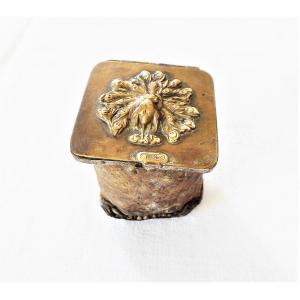
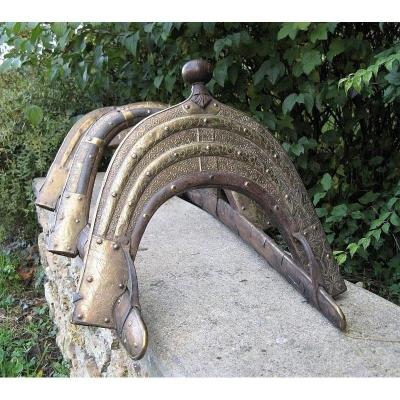

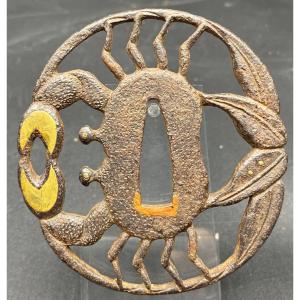

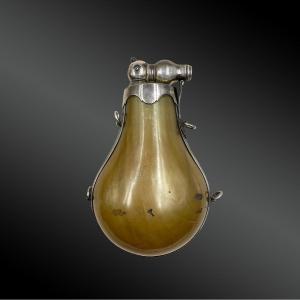



 Le Magazine de PROANTIC
Le Magazine de PROANTIC TRÉSORS Magazine
TRÉSORS Magazine Rivista Artiquariato
Rivista Artiquariato
